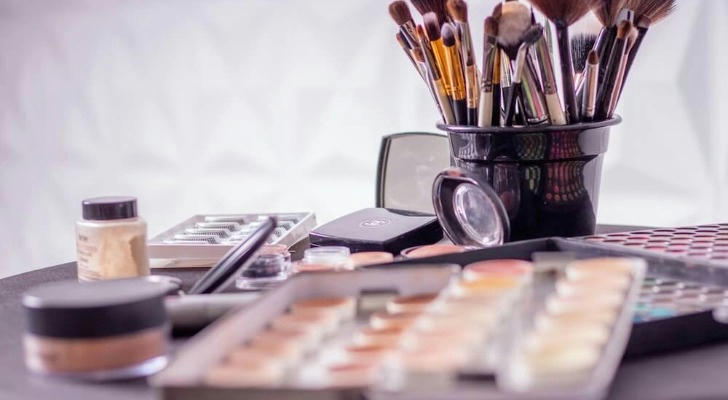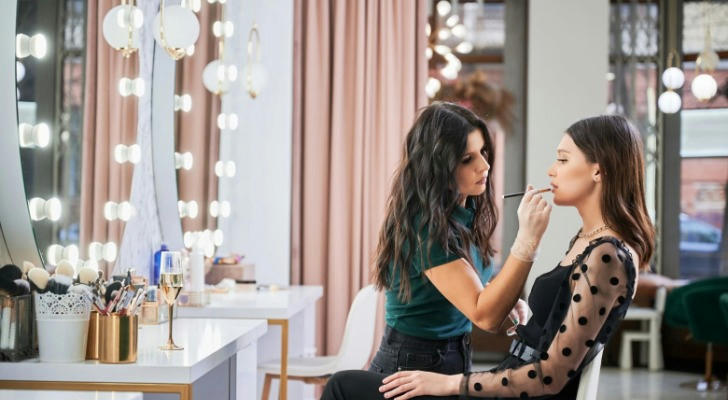Between Light and Shadow, I Became a Designer of Lives — A Makeup Artist’s Journey
“You look amazing today!” That’s one of the compliments I hear most often, but few people know that before I became a makeup artist, I was someone who didn’t even know how to pick the right shade of lipstick.
My name is Jing Li. I’m from California, and I now work as a freelance makeup artist specializing in bridal, portrait, and film makeup. I have my own appointment system, a loyal client base, and even some small film set experiences under my belt. But none of this came easy.

A Chance Encounter with Passion
After college, I worked as an administrative assistant at an advertising company. The job was stable but uninspiring. One day, the company needed a makeup artist for a promotional shoot, but no one was available. I volunteered—“I can try!” I had only casually followed beauty YouTubers and had a basic understanding of products and techniques.
To my surprise, the director praised me after the shoot: “You have a great eye and attention to detail.” That sentence lit a spark in me—one I didn’t even realize had been there all along.
I began diving into beauty content in my spare time—buying books, watching tutorials, and practicing on myself and my friends. Gradually, my interest grew into something more serious, and I started to wonder: could I actually make a career out of this?
Professional Training and Career Transition
Interest alone wasn’t enough. I enrolled in a reputable local makeup academy to study makeup artistry in a structured way—learning everything from daily looks and evening glam to bridal and film makeup.
It was harder than I expected. Makeup artistry isn’t just instinct—it’s about understanding facial structure, lighting, skin textures, and maintaining steady hands. The program required us to complete at least two full-face looks daily, document them, and receive critiques. I barely had any rest during those months, but I grew quickly.
After graduating, I earned my California makeup license and started working part-time with a wedding planning company while building my own social media presence. I shared my makeup work and tutorials, slowly building a client base from scratch.
My First Solo Bridal Client
I’ll never forget my first independent bridal client. The night before, I was so nervous I couldn’t sleep. She cared deeply about every detail and had three consultations with me beforehand. On the big day, I spent over three hours perfecting her look.
When she saw herself in the mirror, she cried and said, “This is the most beautiful I’ve ever looked.” I nearly teared up myself. In that moment, I realized that being a makeup artist isn’t just about technical skills—it’s about emotional connection. We give people confidence for their most important moments. That’s a unique kind of fulfillment.

Expanding My Reach
As my experience grew, so did my opportunities. I began working on creative editorial shoots with photographers, and even did special effects makeup for a short film. For that project, I had to create realistic bruises and scars—detailed work that took multiple revisions before the director was satisfied.
I also started attending advanced training courses—airbrush makeup, stage makeup, and techniques for different skin tones—to keep up with trends and serve more diverse clients.
At a makeup expo, I met artists from all over the world. Their stories showed me that makeup isn't just about beauty—it's about art, storytelling, and cross-cultural expression. It inspired me to keep pushing my boundaries.
From External Beauty to Inner Healing
Being a makeup artist means seeing people at vulnerable moments. I’ve worked with anxious brides, teens battling acne-related insecurity, and transgender clients looking to affirm their identities through makeup.
I began studying basic psychology to improve my communication skills and better support my clients. One experience that stayed with me was working with a woman who had facial scars from a car accident. She came to me for her engagement photos, hoping I could make her feel beautiful again. I designed a soft light-and-shadow look that softened the scars and highlighted her features.
When she looked in the mirror, she said, “You didn’t just do my makeup. You helped me face the world again.” That moment reinforced my belief that makeup is powerful—not just in what it changes on the outside, but what it restores on the inside.
Conclusion: Makeup as Gentle Revolution
Today, I work with confidence and purpose. I don’t just strive to make someone look like a beauty standard—I strive to understand their story and bring it forward. Every face tells a tale, and my job is to let that story shine.
I’m now planning to open my own studio where I can mentor newcomers and help more people find their glow. If you ask me what being a makeup artist really means, I’d say: “We’re like quiet magicians—lifting others up in their most important moments, through a brush and a bit of light.”

And me? I’m just grateful that along this path, I found myself.
